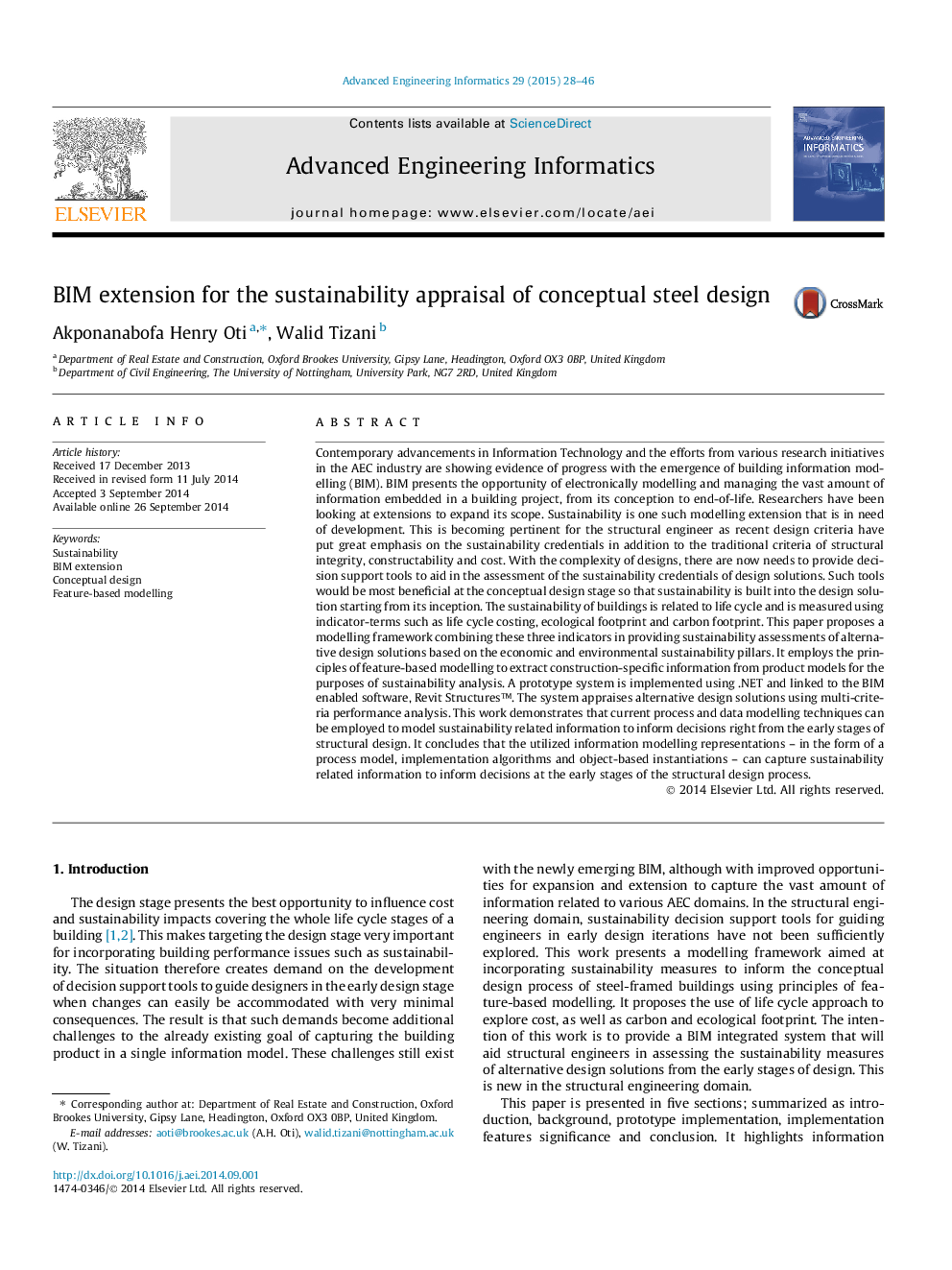| Article ID | Journal | Published Year | Pages | File Type |
|---|---|---|---|---|
| 242003 | Advanced Engineering Informatics | 2015 | 19 Pages |
•Proposed a BIM-based structural sustainability appraisal system.•Implemented the system in OOP environment (C#) based on a modelling framework.•The framework considers economic and environmental sustainability.•Established process models, algorithms and object-based instantiations.•The representations are useful for implementing plausible BIM extensions.
Contemporary advancements in Information Technology and the efforts from various research initiatives in the AEC industry are showing evidence of progress with the emergence of building information modelling (BIM). BIM presents the opportunity of electronically modelling and managing the vast amount of information embedded in a building project, from its conception to end-of-life. Researchers have been looking at extensions to expand its scope. Sustainability is one such modelling extension that is in need of development. This is becoming pertinent for the structural engineer as recent design criteria have put great emphasis on the sustainability credentials in addition to the traditional criteria of structural integrity, constructability and cost. With the complexity of designs, there are now needs to provide decision support tools to aid in the assessment of the sustainability credentials of design solutions. Such tools would be most beneficial at the conceptual design stage so that sustainability is built into the design solution starting from its inception. The sustainability of buildings is related to life cycle and is measured using indicator-terms such as life cycle costing, ecological footprint and carbon footprint. This paper proposes a modelling framework combining these three indicators in providing sustainability assessments of alternative design solutions based on the economic and environmental sustainability pillars. It employs the principles of feature-based modelling to extract construction-specific information from product models for the purposes of sustainability analysis. A prototype system is implemented using .NET and linked to the BIM enabled software, Revit Structures™. The system appraises alternative design solutions using multi-criteria performance analysis. This work demonstrates that current process and data modelling techniques can be employed to model sustainability related information to inform decisions right from the early stages of structural design. It concludes that the utilized information modelling representations – in the form of a process model, implementation algorithms and object-based instantiations – can capture sustainability related information to inform decisions at the early stages of the structural design process.
Graphical abstractFigure optionsDownload full-size imageDownload as PowerPoint slide
